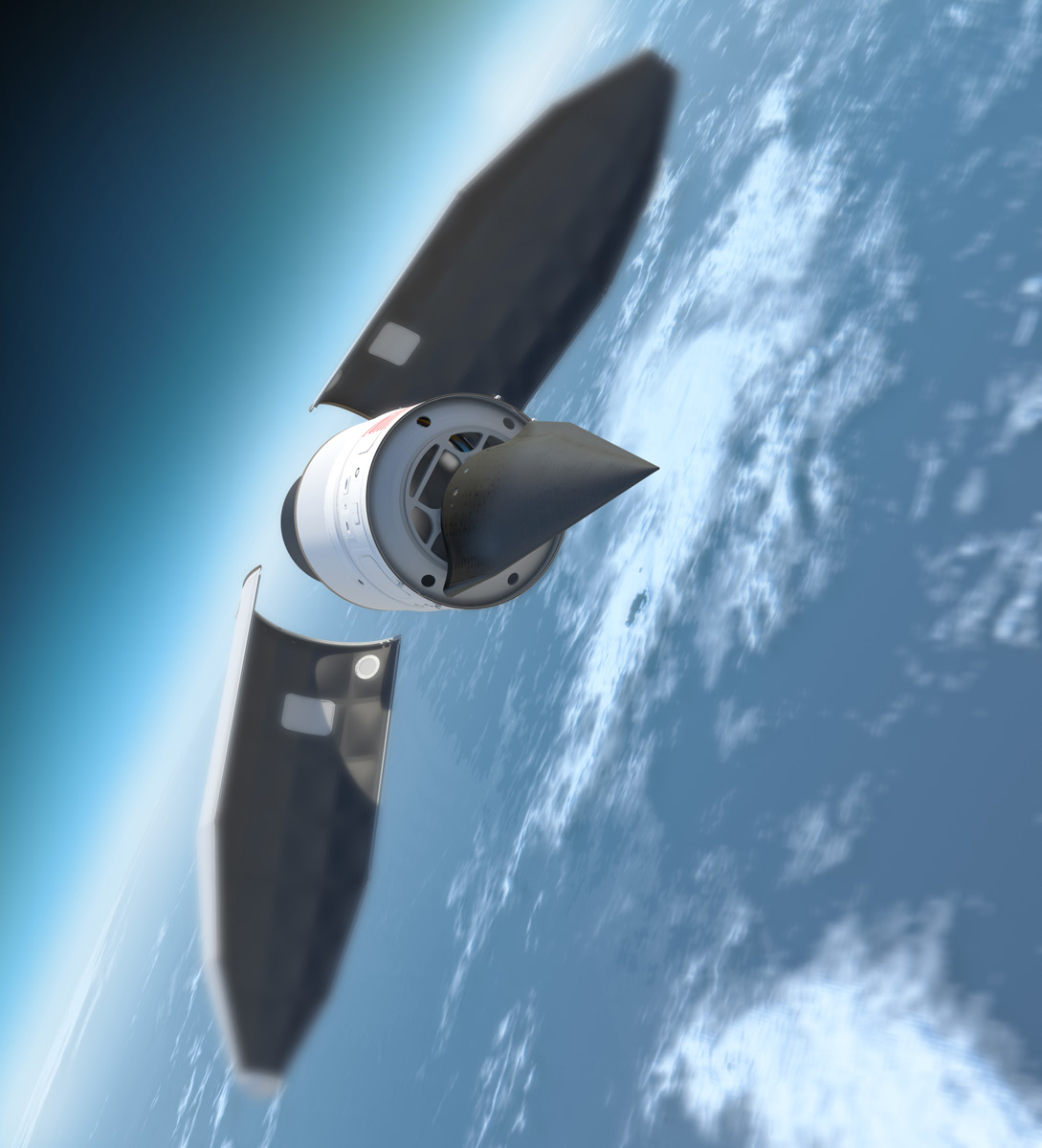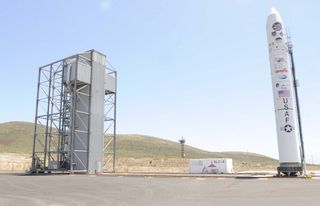
DARPA will launch the second flight test of an unmanned hypersonic glider Thursday (Aug. 11) to test technologies needed for a new global strike bomber concept designed to fly 20 times the speed of sound.
The ultra-fast vehicle, called the Falcon Hypersonic Technology Vehicle 2, is slated to launch from Vandenberg Air Force Base in California atop a Minotaur 4 rocket after a one-day delay due to bad weather. Liftoff is set for sometime between 7 a.m. and 1 p.m. PDT (10 a.m to 4 p.m. EDT).
Mach 20, or 20 times the speed of sound, varies depending on elevation and air temperature, but the Falcon will be traveling in excess of 13,000 mph. At that speed, it could travel from New York to Los Angeles in less than 12 minutes, and friction with the air can heat it up to 3,500 degrees Fahrenheit. [DARPA's Video Plan for Hypersonic Test Flight]
The HTV-2 is part of a DARPA plan called Prompt Global Strike. If testing is successful, it could be used as an advanced weapons system whose incredible speed makes it capable of knocking out any target in the world within an hour of launch.
DARPA's first Falcon test, HTV-1, did not go as planned. Researchers lost contact with the vehicle nine minutes into the first flight test in April 2010, and failsafe programming caused the Falcon HTV-2 to make a controlled dive into the ocean.
Researchers are hoping to push the vehicle further and gather more data with this subsequent test.
"DARPA looks forward to conquering more unknowns about long-duration hypersonic missions. We need to increase our technical knowledge to support future hypersonic technology development," said Dave Neyland, director of DARPA’s Tactical Technology Office. "We gained valuable data from the first flight, made some adjustments based on the findings of an engineering review board to improve this second flight, and now we’re ready to put all of that to the test." (DARPA stands for Defense Advanced Research Projects Agency, and is part of the U.S. Department of Defense.)
Get the Space.com Newsletter
Breaking space news, the latest updates on rocket launches, skywatching events and more!

Some changes include an adjusted center of gravity and lower angle of attack (angle at which the vehicle hits the air).
A Minotaur rocket will launch the HTV-2 nearly into Earth orbit, then the HTV-2 will detach and follow a glide trajectory at Mach 20. More than 20 sensors will collect data during the flight.
The HTV-2 could replace the current intercontinental ballistic missile systems. There were only two HTV-2 prototypes built and DARPA has no plans to build more, so after the failure of the first test, DARPA has only one more shot at a successful flight or the project will be discontinued.
Dan Hope is a staff writer for TechNewsDaily, a sister site to InnovationNewsDaily and SPACE.com. Follow InnovationNewsDaily on Twitter @News_Innovation, or on Facebook.
Join our Space Forums to keep talking space on the latest missions, night sky and more! And if you have a news tip, correction or comment, let us know at: community@space.com.

